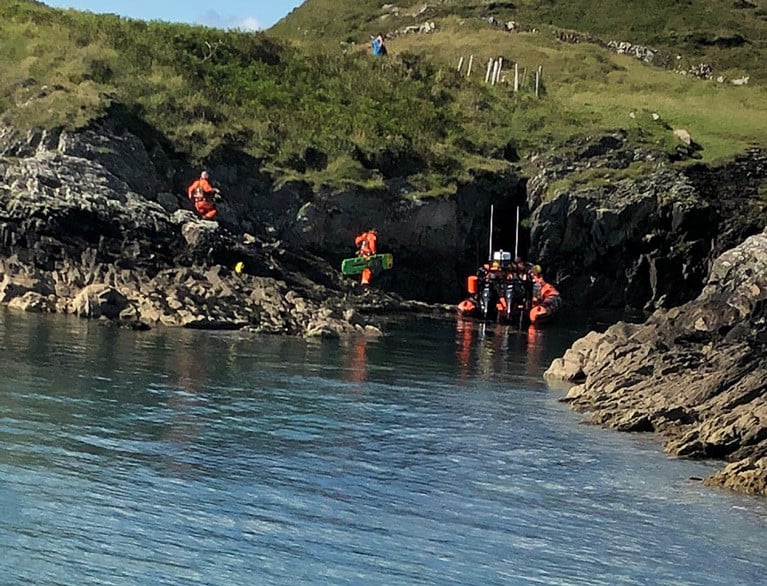Baltimore RNLI was called out to a medical evacuation earlier this evening (Thursday 9 July) after a teenage girl fell nearly 10 metres down a blow hole on East Skeam Island, off the coast of Baltimore in West Cork.
The volunteer lifeboat crew launched their all-weather lifeboat at 5.25 pm, following a request from the Irish Coast Guard to provide medical assistance and evacuation to the 17-year-old who had sustained injuries in the 30ft fall which left her "deeply shocked", according to RTÉ News.
The Baltimore all-weather lifeboat arrived at the island within 10 minutes of launching. A member of the public was already on the scene and Schull Coast Guard's rigid inflatable boat (RIB) arrived shortly afterwards, followed by the coastguard helicopter Rescue 115.
The RIB transferred two volunteer members of the Baltimore lifeboat crew, Emma Lupton and Jerry Smith, from the lifeboat to the cave.
After assessing the situation, the girl was placed on a stretcher and removed from the cave by the lifeboat and coast guard crew.
Extraction proved difficult as the cave was very narrow and there was a rising tide at the time. Once the casualty was safely transferred to the helicopter helicopter, the lifeboat then returned to the station in Baltimore at 7.18pm.
"Extraction proved difficult as the cave was very narrow and there was a rising tide"
There were five volunteer crew onboard the lifeboat: coxswain Kieran Cotter, mechanic Cathal Cottrell and crew members Jerry Smith, Emma Lupton and Sean McCarthy. Conditions at sea during the call out were calm with a north-easterly Force 2-3 wind, no sea swell and very good visibility.
Speaking following the callout, Kate Callanan, Baltimore RNLI volunteer lifeboat press officer, said: "If you find yourself in need of medical assistance whilst at sea or on an island, call 999 or 112 and ask for the coastguard. We wish the casualty a full recovery."































































